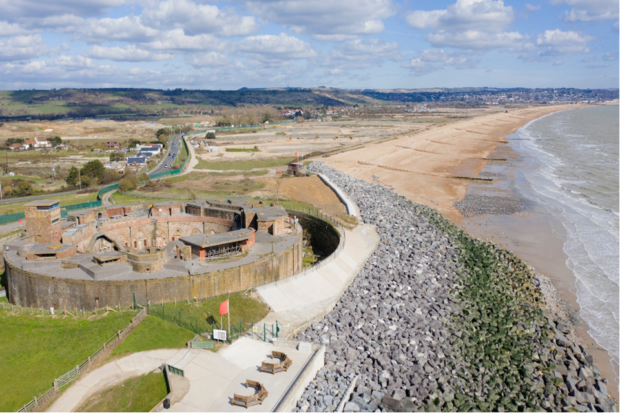
There is coverage today of the Environment Agency’s roadmap to hit net zero as an organisation by 2030. The Evening Standard, Construction News and various local outlets report that low-carbon concrete will be used for flood defences, a move that will help reduce emissions by 45%.
This is alongside other measures such as energy-efficient pumps to help move water away from homes during floods and a switch to electric cars for the whole organisation by 2023. EA’s contractors and suppliers will also be pushed to do more, with large contracts building in commitments to reduce carbon footprints year-on-year.
An article in The Times incorrectly claims that some communities will “miss out” on flood defences under plans by the Environment Agency to cut its carbon footprint. That is not true.
We have said repeatedly that where we need concrete defences, we will keep on building them. We will only use what we need to and will use low carbon concrete as our default. We will also continue to use natural flood management systems. Alongside this, we will also continue to use natural flood management and property flood resilience to better protect homes and businesses.
By 2050, there will be 59 percent more winter rainfall and by 2100, once-a-century sea level events are expected to be annual events. Against this backdrop, our estimates say it would cost £1bn a year to keep flood risk on the level it is today. To meet this challenge we will continue to protect communities from flooding through tools like low carbon concrete, as well as building in long-term resilience by enhancing nature.
Sir James Bevan, Chief Executive of the Environment Agency, said:
Reaching net zero will be one of the biggest challenges the Environment Agency has ever faced. It will require every single one of us to play our part, and to think and act differently.
We will integrate net zero into every aspect of our work over the coming decade. By learning, sharing best practice and partnering with our suppliers, businesses and communities across the country, we will do everything we can to play our part in becoming a net zero nation and tackling the climate emergency that we all face.
Emma Howard Boyd, Chair of the Environment Agency, said:
In the flurry of net zero announcements recently, many have questioned how some organisations are going to reach future targets. This roadmap sets out credible short-term and long-term action to bring down emissions in our operations and supply chain.
We can’t insulate our activities from the wider economy’s impact on the climate, which is why the Environment Agency’s work to help the country become more resilient to shocks like floods and heatwaves has never been more important.
You can do both. We are working with businesses and Departments across government to create resilient infrastructure and reach net zero at the same time, with tools like low carbon concrete. As a global ambassador for COP26’s Race to Resilience, I aim to bring practical examples of this work to the attention of the world.
Tom Brown, Jacobs CSF Framework Director and Chair of the Framework Directors’ Net Zero Group, said:
It is clear just how passionate and committed the Environment Agency’s supplier partners are to delivering our work more sustainably, understanding the hugely significant part we play in helping the Environment Agency achieve its net zero ambitions together.
Meeting this challenge will take many forms, including innovative low-carbon solutions, new ways of thinking and delivering to use less carbon in all that we do whilst delivering resilient flood risk management.
An offsetting strategy is also in development to address all remaining emissions. The strategy, due out by April 2022, will outline how the EA will work with key partners on projects to lock away carbon while bringing added benefits to people and nature, such as reduced flood risk and improved habitats.
1 comment
Comment by Geoffrey White posted on
There was a Radio 4 programme this morning " Start the week" about retreating glaciers climate change and geoploitics. A wide emcompass of issues included the rare metals from the rare earths and the huge quantity of them required by electrification policies, and the actual resources on the planet containing them. It seems these policies more than the sensible use of the earth's resources. It was explained a better way is to use hydrogen from green processes to power fuel cells and thereby obtain no CO2 emissions. There is a lot of hydrogen available and the resourse is there. For example huge shipping powered by such green hydrogen is free from CO2 emissions.